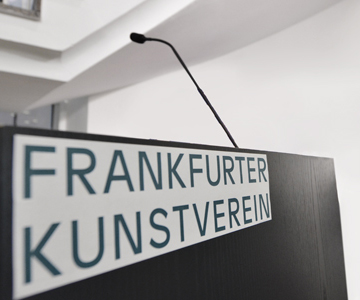Lecture: The City as Public Space
07.11.2012
Slide lecture by Carlos Becker and Benjamin Pfeifer followed by a discussion with guests from the fields of architecture, science, and politics.
Urban public spaces serve as the playgrounds of public life, where it is possible to experience density and urbanity. In the process public space mediates between a large number of functions—living, working, shopping, culture and leisure. But most of all, public space facilitates between a large number of people, who—to a varying extent—show themselves in public space and encounter one another as strangers. Conceiving the public realm in an emphatic sense, one could say that society experiences its differences and diversity in public space. Living in a large city therefore always means that one can go out the door and encounter people who look different and behave differently than oneself.
However, countering this idealistic description of public space as a modern catalyst for integration as offering everyone access to the same places is the practical experience of the privatization of such spaces, the increasing monitoring of this realm as well as social segregation.
If you consider public space as having an important integrative function, the question poses itself as to which conditions allow this promise of inclusion to be realized. What is the meaning of the public realm? Why are some spaces accepted and others rejected? What kind of people encounter one another in public space?
Over the course of the evening questions of urbanity and the quality of public spaces will be analyzed both on a theoretical level and on the level of practical design. City planners and architects will lead the discussion about the conditions that determine the successful design of public areas—also providing selected examples. What image of public space do architects and urban planners have in mind when designing public spaces? What significance does the demand for handicapped accessible spaces (for example for people in wheelchairs or the blind) carry and how is this facilitated by other aspects of city planning and urban design? Finally, what is the relationship between aesthetics and society?
Slide lecture: Carlos Becker
Discussion with: Heike Hambrock, Gabriele Kiefer, Tamara Grcic, Ulrich Berding
Moderation: Benjamin Pfeifer

